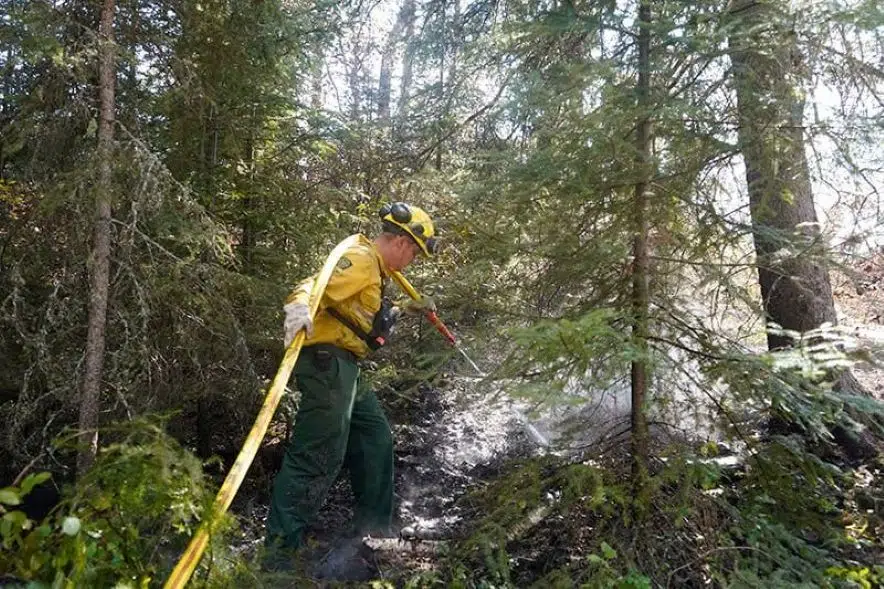While the weather this week might have put a damper on summer temperatures, it also has put a damper on wildfires in Saskatchewan.
During Friday’s provincial wildfire update from the Saskatchewan Public Safety Agency (SPSA), vice-president of operations Steve Roberts said the cooler weather and some recent rainfall has helped quell the flames in the northern part of Saskatchewan.
As of 10:30 a.m. Friday, SPSA president Marlo Pritchard said there were 21 active fires in the province. Three of those fires are contained, 10 were classified as ongoing assessment, three were considered “protecting property” and five were uncontained.
The cooler weather and rain have allowed crews to switch from indirect to direct attack, Roberts explained.
Indirect attacks are used when hazards are high. A more direct attack means crews can be more aggressive and battle flames from the fire line with heavy equipment backing them up. Roberts said that allows them to man those lines deep into the fire and make sure they hold, increasing success and containment.
Roberts said the fires are burning through forested areas, including coniferous and deciduous brush, which impacts how the fire behaves.
Deciduous trees have leaves that fall off yearly. Roberts said those areas have not “leafed out” yet, keeping fire closer to the ground and moving fairly quickly.
For coniferous plant life — trees bearing cones and needles — flames move upwards and become more elevated.
Swampy areas have been useful to crews, as they become part of the control line, helping slow and limit the spread of fires.
The six fires of note burning in the province presently equate to almost 300,000 hectares or about 3,000 square kilometres, combined.
Travel advisories for the Montreal River north of Highway 2 and the junction with Highway 165 have been lifted, as well as for the area in and near Besnard Lake and north of the Churchill River.
Four of the fires the SPSA has been part of battling no longer pose a threat to travellers, boaters and paddlers in areas near La Ronge, Montreal Lake and Pinehouse Lake.
The SPSA is still supporting some evacuees with food, clothing, shelter and other services. There are 52 evacuees from Buffalo Narrows in Lloydminster and 131 evacuees from Patuanak in North Battleford.
Pritchard shared that evacuees who were staying in Regina have now been repatriated to their home communities. He said local leadership is deciding when evacuees should return, once communities are safe.
“Even though there remains some smoke hazard, the physical threat to those communities has been reduced,” Roberts said.
Roberts further clarified that evacuees with medical conditions are largely still waiting to return home, with smoke still heavy in communities from the nearby wildfires.
Patuanak is still under its evacuation order and a decision on evacuees returning will be made when it is appropriate to bring citizens back to that community, Roberts shared.
Evacuees are returning home to their communities, which Roberts said have been protected from the fires. Some SaskPower infrastructure has suffered damage but been repaired. Some remote values like cabins and sheds have also been damaged by the fires. Owners of these properties will be contacted directly, Roberts shared.
The public is still cautioned to check for fire bans, advisories and air quality alerts when travelling in the northern part of the province affected by wildfires.











